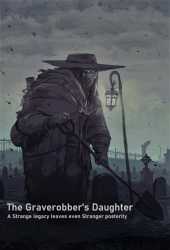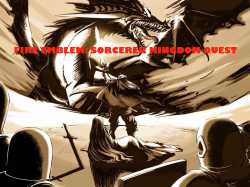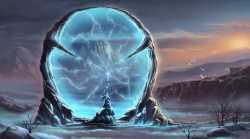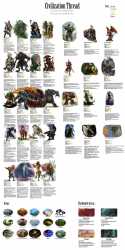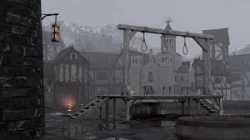Quoted By:
To wit; it cannot be gainsaid that the Many Mysteries are well-without the purview of Flegmat, or any other author herein this Canon; truly, it is that they would write of Mysterious Medicine and Healing Arts with the same authority as a Counter-Clerk would of chirurgery! However, here Flegmat wrestles – gainfully, mind – with the long-historied role that those who Delved had on the mundane study of Humorous Nature. His accounting of the rise into good-grace of the Fourfold Theory is well-fleshed, though not novel to anyone passably read. The account of the subsequent fall from good-grace and the too-incremental acceptance of its successor, the Comprehensive Theory - elsewhere named as the Singular or the Singular Comprehensive Theory - is novel, controversial, and in the eyes of some, perhaps even dangerous. As its inclusion was not a decision gently made nor borne, so it may be said that it being rendered here at all is testament to the strength of Flegmat's argumentation, and the butcher's bill that the slow adoption of Singular Theory has needlessly wrought.
- A preface from a Stricken printing of <span class="mu-i">The Canon of Medicine</span>, a collection of writings on medical history by a number of authors. The Fourfold Theory held that for man there is an internal alchemical balance of phlegm, blood and bile - both yellow and black - and that when balance between these four is lost, illness and malady are inevitable. The Comprehensive Theory holds that there is but one 'family' of Humors, not four - hence Singular - and that it is the presence of these Humors, not the balance of them, that are responsible for illnesses. Medical interventions that ascribe to the Comprehensive Theory of Humors are more successful than those that ascribe to the Fourfold Theory, though as the Comprehensive Theory was developed by Witches as opposed to Physicians, its adoption in the fields of Mundane medicine has been slow, partially on account of the inclement association, but primarily as any benefits from implementing the theory in practice were misattributed to Mysterious Medicine, and were assumed to be beyond mundane practitioners.
<span class="mu-i">In Scrimshaw Mount, all graves are shallow. Even on the Promontory, where Nature, through the permutations of the Pattern had placed soil on the otherwise nude basalt of the Mount, the bone white stone was never more than a few feet down, commonly less than one. As such, getting graves to the standard depth of eight feet was simply not practical for those interned in the Mount's public burying grounds. But those that lived their lives and died their deaths on the Mount didn't take overmuch umbrage at their shallow graves. For both the practical and pious among them understood full well that under the panopticonical Gaze of the Patternmaker Above … all things are shallow.</span>
- A preface from a Stricken printing of <span class="mu-i">The Canon of Medicine</span>, a collection of writings on medical history by a number of authors. The Fourfold Theory held that for man there is an internal alchemical balance of phlegm, blood and bile - both yellow and black - and that when balance between these four is lost, illness and malady are inevitable. The Comprehensive Theory holds that there is but one 'family' of Humors, not four - hence Singular - and that it is the presence of these Humors, not the balance of them, that are responsible for illnesses. Medical interventions that ascribe to the Comprehensive Theory of Humors are more successful than those that ascribe to the Fourfold Theory, though as the Comprehensive Theory was developed by Witches as opposed to Physicians, its adoption in the fields of Mundane medicine has been slow, partially on account of the inclement association, but primarily as any benefits from implementing the theory in practice were misattributed to Mysterious Medicine, and were assumed to be beyond mundane practitioners.
<span class="mu-i">In Scrimshaw Mount, all graves are shallow. Even on the Promontory, where Nature, through the permutations of the Pattern had placed soil on the otherwise nude basalt of the Mount, the bone white stone was never more than a few feet down, commonly less than one. As such, getting graves to the standard depth of eight feet was simply not practical for those interned in the Mount's public burying grounds. But those that lived their lives and died their deaths on the Mount didn't take overmuch umbrage at their shallow graves. For both the practical and pious among them understood full well that under the panopticonical Gaze of the Patternmaker Above … all things are shallow.</span>
